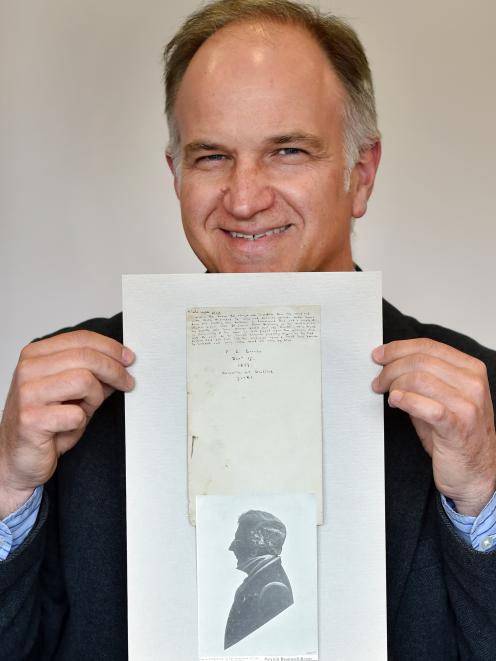
The work was written by English painter and writer Patrick Branwell Bronte and was discovered in the Dunedin Public Library, misfiled as a letter in the Heritage Collections.
Mr Bronte was the lesser-known brother of prominent novelists Charlotte, Anne and Emily Bronte.
He is remembered for his tragic death from alcoholism, for painting the only group portrait of his sisters, and for being the first Bronte sibling to see their work in print.
University of Otago English and linguistics senior lecturer Dr Thomas McLean and University of Melbourne ARC Centre of Excellence for the History of Emotions researcher Dr Grace Moore investigated Bronte's life and work so they could properly explain the significance of the manuscript.
They discovered the Dunedin fragment provided the ending for a story he wrote in 1837.
The pair pieced together the microscopic handwriting, sometimes word by word, sometimes letter by letter, and were able to place the fragment at the end of a scene in an inn, identified as part IV (i) of Angria and the Angrians.
Dr McLean visited the Bronte Parsonage Museum in Haworth, Yorkshire, in August and examined Bronte's writing journal from which the page was taken.
``I could see exactly where our page fit.
``The fragment provides the finishing touches to the story,'' he said.
They believed the piece might have become separated from the rest of the story because it was written on a slightly different-sized piece of paper to the rest, as though it was an afterthought.
``It also bears a date eight weeks later than the chapter it concludes.''
The rest of the story, which has already been published, survives at the Bronte Parsonage Museum.
It is one of a collection of stories about the imaginary land of Angria that Branwell and Charlotte wrote about in their youth.
``Branwell would write one story, and then Charlotte would write the next,'' Dr McLean said.
``It was a kind of practice ground for the siblings, and it surely helped Charlotte refine the storytelling skills that would come together so remarkably in Jane Eyre.
``When Jane Eyre was published in 1847, its readers were astonished that a first novel could be so good. But the truth is, Charlotte and her siblings had been writing for each other for almost two decades before Jane Eyre appeared. The Dunedin fragment is, quite literally, a page from that remarkable history.''
The fragment was bought by the Dunedin Public Library in 1928 and is part of the Alfred and Isabel Reed Collection of rare books and manuscripts.
Dr McLean said it would remain at the Dunedin library, but a copy of it would be added to the original manuscript in the Bronte Parsonage Museum.
He believed future publications of the story would need to include the Dunedin page.
``It's incomplete without it. Any scholar working on Bronte juvenilia or on Branwell's writings will want to know about it.''
Dr McLean said the fragment had encouraged him to do more research.
``There are other missing pages in the Bronte archives. So who knows what else is out there?''











